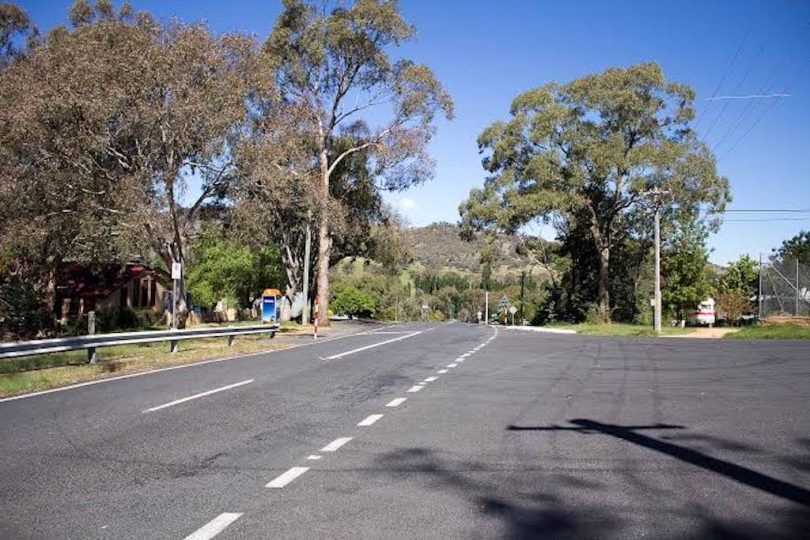
The Murrumbidgee River at Tharwa. Photos: Supplied.
More than 50 years after building their own water supply system, Tharwa Village residents continue relying on it, as well as a licence to extract water from the Murrumbidgee River. Even when the river recedes in summer, locals know where to dig in the sand for water.
“There are ways and means,” according to Kevin Jeffery, who’s also Tharwa Community Association president.
“As a small village, we have to do it ourselves. We rely on the generosity of volunteers to dig holes, essentially.”
Mr Jeffery says the village has so far been unable to agree with the government on a suitable site for a large water storage and pumping facility for unpotable water for fire-fighting. Worth $900,000, the government proposed several sites for the 380,000 litre facility including in the village square, but the locals say it’s too big and a traffic hazard near their pre-school at this location.

One of the proposed sites of the water storage tanks, which village residents don’t want.
Mr Jeffery said the 2015 water supply strategy recommended several measures, and about the only thing to survive budget considerations was the storage and associated pumping equipment, which the village considers unnecessary.
“It is a massive piece of infrastructure, well out of scale for the village,” Mr Jeffery says. “That is the core of the village, the centre is an open area between the shop, the school and the tennis courts. So essentially a small village with a country feel and a master plan which was just expensively produced by the government, said Tharwa should retain the country rural character. Now they want to put a massive concrete block with pumps and diesel tanks and two massive water tanks there, well out of scale with the village.”
Mr Jeffery has written to Transport Canberra and City Services Directorate (TCCS) saying the location was unsuitable.
“We have pushed them for a gravity-fed site on the hill behind the village where the current aging water supply is located. We maintain it as a community,” Mr Jeffery said.
When the government rejected the preferred site on the grounds it was private land unsuitable for a government asset, and its proximity to yellow box red-gum grassy woodland, Mr Jeffery said the leaseholder was waiting for a request to sell, swap or hand in the land. These proposals were not progressed.
In written responses to questions from Region Media, TCCS said the Tharwa community was invited to discuss the project with TCCS in April and August this year. The village’s preferred location did not provide safe access and egress for firefighting vehicles. The development would be resubmitted for approval, and the public notified before a decision on location was made.
TCCS said the Tharwa Village Plan identified the proposed location as “a strategic fire-fighting advantage zone” for the ACT Government. Construction is expected to begin in late 2019 and be completed in mid-2020.
The proposed water storage was restricted to urban fire-fighting, but Mr Jeffery said the government then included rural fire trucks when he pointed out the biggest threat from fire to the village would come from bushfires.
“The local rural fire brigade was not too fussed about [the proposed stage facility] because it takes a few minutes for them to get to the nearest hydrant in Banks, or they pump out of the river when they need to, or a dam, or whatever.”
If the storage system was to go ahead, the villagers should be entitled to draw from it to water their gardens, Mr Jeffery said. He said in times of bushfire, ACT residents were expected to provide as much self-protection as they could. This was written into emergency services documents. “Yet in this case residents are being specifically excluded from any access to the un-potable water [from the proposed storage] to keep their gardens green. It is impossible to have a green garden during a summer of extreme fire danger from personal tank water off their own roof, because there isn’t any. They have just enough for drinking and washing,” Mr Jeffery said.














